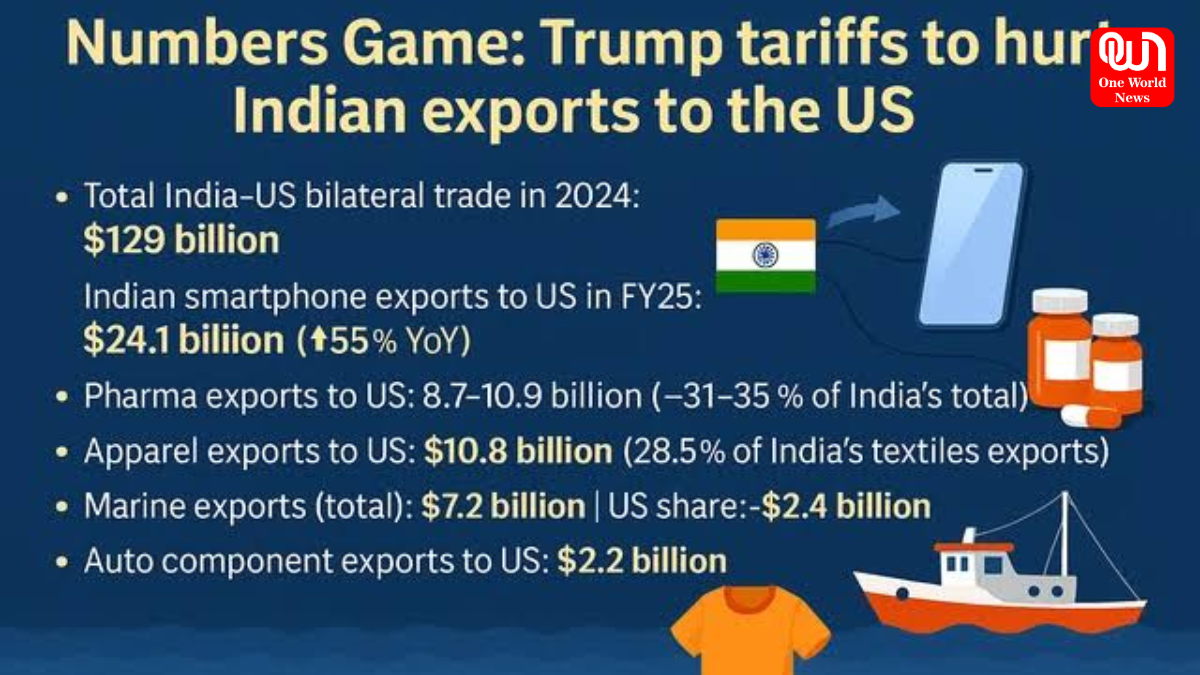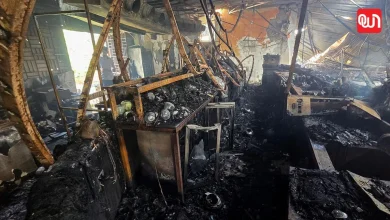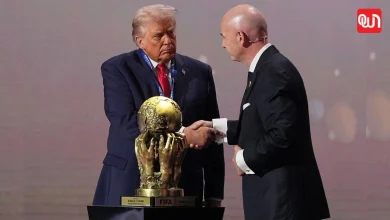US Tariffs on Indian Goods Rise by 25% Under Trump: What It Means in 10 Points
With the additional 25% tariff now active, India’s export sectors are grappling with deep financial strain.
Trump Imposes Additional 25% Tariff on Indian Goods: 10 Key Takeaways on Export Impact
The United States, under President Donald Trump, has imposed an additional 25% tariff on Indian goods, doubling duties to a steep 50%. The move, which came into effect on August 27, 2025, has sparked concerns across India’s export-driven sectors, from textiles and leather to gems and jewelry. Trump justified the decision citing India’s trade practices and continued imports of Russian oil, while Indian officials warned of severe disruptions to bilateral trade. With nearly $55 billion worth of exports at stake, the new tariff poses significant challenges for Indian businesses and risks straining U.S.–India economic relations further.
1. A Steep Increase Reaches 50%
As of August 27, 2025, the U.S. has escalated tariffs on Indian goods to 50%, combining an initial 25% reciprocal rate with an additional 25% penal levy tied to India’s continued purchases of Russian oil .
2. Exports at Risk
This sharp rise puts at least 55% of India’s exports to the U.S., worth around $48–55 billion, in jeopardy, drastically altering trade dynamics .
3. Labor-Intensive Sectors Take the Blow
Textiles, gems and jewelry, leather goods, seafood, footwear, and chemicals are among the hardest hit, with tariffs rendering Indian products far less competitive .
4. Severe Fallout in Diamond Hub
In Surat—the heart of India’s diamond industry—production has nearly halted. Up to 50,000 workers have already lost jobs, and another 100,000 are at risk .
5. Regional Export Disruption
Kolkata’s leather and textile exporters are reeling. Many now consider rebranding goods as “Made in Europe” to survive U.S. import barriers .
6. Immediate Economic Shock Expected
Analysts forecast a likely 20%–30% drop in exports from September, as U.S. clients halt new orders amid pricing non-viability .
7. Partial Relief for Some Sectors
Certain categories—like pharmaceuticals, electronics, and energy products—have been temporarily exempted from the new tariffs, providing limited relief .
8. Government Response: Aid & Diversification
India is preparing financial aid measures—such as subsidies and easier credit—while aggressively seeking to reroute exports to markets in Europe, Africa, Southeast Asia, and Latin America .
9. Impact on Diplomatic Ties
The move has significantly strained U.S.–India relations. Despite ongoing strategic alliances, distrust has deepened, with discussions under the “Quad” and broader trade deal efforts stalled.
10. Long-Term Risks to “Make in India” and Investment
Experts warn the tariffs could derail India’s manufacturing ambitions, damage foreign investor confidence, and shift some global supply chain investments away from India toward Vietnam or China.
With the additional 25% tariff now active, India’s export sectors are grappling with deep financial strain. Labor-intensive industries are most vulnerable, prompting urgent government action and diversification efforts. The ripple effects extend beyond economics—touching industrial policy, diplomatic ties, and India’s vision to elevate its manufacturing landscape.
We’re now on WhatsApp. Click to join.
Like this post?
Register at One World News to never miss out on videos, celeb interviews, and best reads








